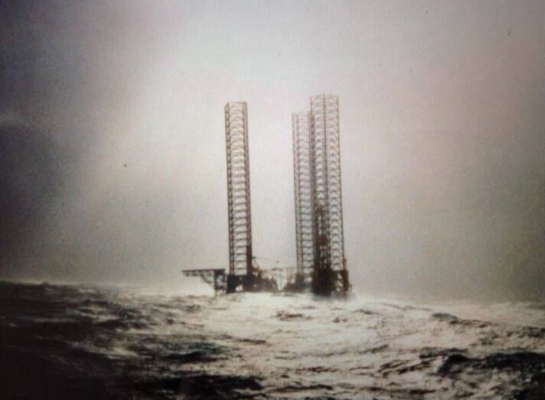The Weekly Reflektion Week 53 / 2020
The anniversary of the loss of the Rowan Gorilla 1 has just passed. Thankfully, there were no casualties.
Past incidents are a valuable source of learning, and the lessons are available if you look for them. Do you utilize these hard-earned learnings?

On the 22nd October 1980, the jack-up rig Dan Prince sank approximately 600 miles south of Alaska while under tow. It was being battered by 60 knot winds and over 50-foot waves, when the towing line broke, and the rig capsized. The Marine Board noted that there was heavy equipment stored on deck which broke free damaging vents. In addition, cracks openedin the hull due to the oscillation of the legs in the heavy seas.
On the 15th December 1983, the Rowan Gorilla 1 had just been built in Louisiana and was on its maiden tow to Nova Scotia in Canada. During the voyage, the shale shaker bulkhead buckled, ‘numerous objects were smashed and moved on deck’, and cracks were discovered in the bulkhead ‘admitting water with each working of the legs’. There is no indication that Rowan either commissioned or conducted any engineering study to determine the exact cause of the damage or to come up with recommendations to prevent recurrence.
On the 8th December 1988, the Rowan Gorilla 1 began the towfrom Canadian waters to the North Sea. In preparation for the tow, equipment was stowed on the pipe deck, including a string of drill pipe, 5-6 containers, 2 well test skids, a wireline unit, 2 flare booms, and the rig ‘Texas deck’. The rig owner area manager also requested that all 4 enclosed lifeboats should be removed from their davits and stowed on deck. Fortunately, the Canadian Coast Guard noticed this during an inspection, and required that 2 of them be re-installed before the tow.
On the 13th December, with the weather building, flooding was detected in two pre-load tanks and fractures were seen which were opening and closing with the movement of the legs. Attempts to repair the fractures were unsuccessful.
As the weather increased, with 45-foot waves and 50 mph winds, the rig developed a 6o trim by the stern. The wireline unit and several containers had broken loose and were skidding around damaging the deck structure. Around noon on the 15th December, the rig was hit by three 50-foot waves in succession and the trim by the stern increased to 8o. At about1330 hrs, the rig was hit by two 60-foot waves increasing the trim by the stern to 12o. It was decided to evacuate the rig.
The crew of 27 were evacuated in one of the lifeboats and the Smit London, which was towing the rig, shadowed the lifeboat until the next day when the weather had improved enough to pick up the crew. There were no casualties, but the rig capsized and sank.
The investigation found that the rig owner failed to draw any parallels between the previous incidents and utilise any potential learnings. Do you check for incidents that can be a source of learning for the activity you are planning?
